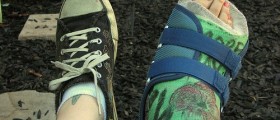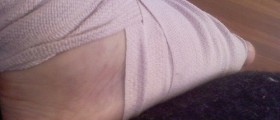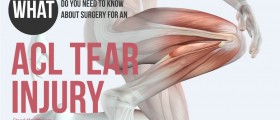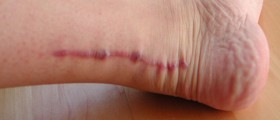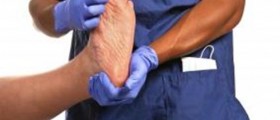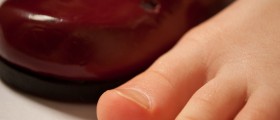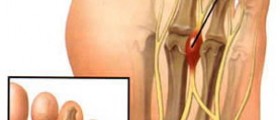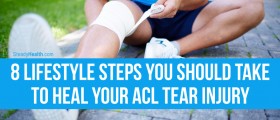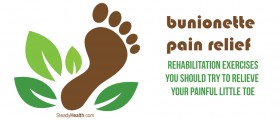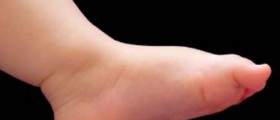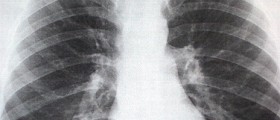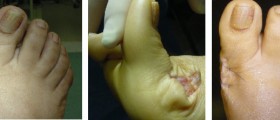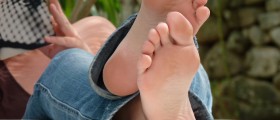Loading...
I also had same injury to second and third metatarsals with torn ligaments and tendons. Had 6 weeks non weight bearing with hard cast. Then it was another 6 weeks before I was walking with air-boot and crutches light weight bearing. Defenately do PT they will help you build strength and muscle, and learn to walk correctly.
Good luck
Loading...
Injury Aug 7th. Non weight bearing for 2 months. Just started walking short distances a couple of weeks ago. P/dr I was supposed to start wearing tennis shoes 2 weeks ago. I spent 1/2 of a day in a pair and that was the end of that. Seemed to have caused severe sharp stabbing pains in some of my toes. Back to just a short medical walking shoe. Almost 12 weeks since it happened and my toes are still tingly/numb and a lot of pain. Sometimes it’s a hot burning sensation, very achy and just plain hurts. Still a little swelling. Bump on inside of foot at the arch. And a small one on left side but neither of those hurt to the touch. I feel like I shouldn’t still be having this much pain, yes some but still enough to keep me awake at night. I can’t take prescription drugs and over the counter stuff doesn’t seem to touch it. I’m getting worried there is more going on than what dr thinks....feel like I should be feeling better by now......?? Yes I had X-rays and mri. Have I started walking on it too soon? Should I get second opinion? Thanks in advance Tami
Loading...
Pain & hot sensation & tingling in toes is the exact same as what I have. I'm 4 weeks post injury.
I think it's the nerves (& a little maybe the ligament(s)? )
I still have swelling. Keep leg raised up very high (above head some times) & this helps me.
4 months since your post. What's the update pls?
EC
Loading...
Hello. I had 7 fractures & 3 dislocations in my foot including my lisfranc joint. Op was eventually 17 days after accident. It was due to be 3 days after in an excellent Spanish hospital, but swelling was too great. Then 10 days after but NHS in Plymouth, England forgot to do correct paperwork for someone who had been in hospital abroad & I waited 7 hours in a bed next to the operating theatre. They put in a bucket load of titanium screws & 2 stainless steel plates as the breaks were a comminuted fracture. 8 days post op I was walking again, although I noticed my thigh & calf muscles have wasted away massively after of 25 days of not using them. I found out about the iWalk knee external skeleton via the web. Then my surgeon strongly recommended it. Brought for £100 on eBay UK. They are cheaper on eBay USA. Or £160 retail. Buy one asap if you have a lower leg injury. Brilliant. I've not missed a day off work since the operation (self employed farmer) and been driving the tractor & dumper truck but it's really hard as I keep needing to sleep in afternoon & get dizzy. I won't drive a car & will only get in a 4x4 to get to the loo or my caravan. Pain is interesting, normally only 1-2 out of 10. Broken bone pain is very low, zero to 1. But nerve pain is awkward. It's 1-5 only the upto 10 scale. It's often waking me up at night. Liquid morphine & paracetamol do hit it, but make it impossible for me to concentrate at work. All I can do is watch movies or YouTube or sleep. I even find it hard to read. Office work is so hard with buggered up sleep & morphine & naproxen anti-inflammatory meds. However it's really great that my damaged nerves are growing & healing. I don't think about the knackered ligament, that comes later... Really going to focus on avoiding office work & just supervising others to do things on farm. Spoken to hospital again this week & they have said that I've done really well keeping leg raised at least 80% of time. I sleep with leg 30-45cm above my heart. I'm going to stay mentally positive & try walking longer distances on the iWalk. I managed 900m on day 10 post operation. You get blisters behind your knee if doing +100m so make sure you use padding behind the knee. However be careful that you don't cut off some of the blood supply to the leg when you bandage on paddling. I ended up getting light headed & dizzy & slow-mo vision for a day because of this, before I worked out the problem. I've got big problems ahead & getting my calf muscle to grow back will take lots of support from physiotherapy. I'm going to have pain walking again & a limp for a long time. I might need a larger shoe size. I might need orthotic insoles. I'm 45 a farmer & a mountaineer & parent. It's been hell for my partner & it was an important break through after 4 weeks when I carried her the first cup of tea using the iWalk. I still can't cook & even sitting on the toilet is really hard not to weight bear. No idea how long I won't be weight bearing but I'll discuss this with the consultants next week. Thanks all on this forum for advice & help. It was really good learning before hand that I'll have a limp. I hope I've helped others avoid trouble with thigh & hip pain. The iWalk really helps prevent it. Bye for now. :)
EC
Loading...
6 weeks post injury, and 3.5 weeks post surgery.
I took my air boot off after using it for 9 days and have tried wearing a very stout B2 / B3 ice climbing boot. It's called a Salomon Super Mountain and you can buy ice climbing boots on eBay for less the £100.
It's really boring after 6 weeks of being injured. I'm a farmer & forester so I need to get physical jobs done.
I try to do 2 or 3 hours of physical work a day and then rest with my leg above my heart for as long as possible. I also sleep with my leg high up in the bed. I prop the mattress up with a roll of carpet under it or I put a folded bouldering mat under the mattress.
I have a lot of pain around my toes and doc has given me 20mag amitriptyline for nerve pain, to be taken at night. I think I should be very careful using the ice boot after just 3.5 weeks post surgery. My muscles are coming back really well in my calf and a nurse I saw who does physio said the ankle movement is very good. However it looks as if I need to just keep heal weight bearing for another 2.5 weeks, with maybe odd days of using my ice boot. I tried to ask the hospital about this, but I person on the front desk at the fracture clinic wasn't helpful and told me to ask my questions in 2.5 weeks at my next appointment.
Worst stuff at present is pain in top of foot and around toes. I've been told it's nerve pain. Also this is the 1st week that I've had my positive outlook slip and I've really had to try hard to stay happy about the next period of recovery.
Best stuff is having more independence and being able to drive a manual vehicle. Being able to shuffle around the house and up and down stairs. Not having crutches. Having a bath again.
Loading...
Loading...
Loading...
I suffered a lisfranc injury, I dislocated my first and my second metatarsal tore the ligament in half which caused the dislocation from the cuneiform bones.
I had ORIF September 20th 2022 and I am now 16 weeks post surgery. Still can’t walk without crutches. I can walk with one but when I’m outside I walk with two so I don’t slip and fall.
I work myself like crazy! I can now do standing calf raises walk up and downstairs and I can walk with one crutch, I can side step and if I’m in my kitchen I walk without my crutches using the counter tops as support. I bought 4 pairs of shoes not knowing which ones would be best for me and still have no idea. But everyday I’m doing the best I can with my injury. Mentally it is the hardest thing I’ve ever had to do, but time will eventually allow me to walk again.
I know I’m probably always going to have some kind of complication with my foot now which is a tough bullet to bite. I’m 28 years old and a lot of life ahead of me I hope anyways. I wish things were different and I wish I never injured myself. But gotta stay positive!
The thing I have learnt is that you need to use your foot as normal as you can to be able to heal properly but also don’t push too far. Listen to your body.
I’m hoping by the end of January I can lose the crutches completely and walk again even if it is with a limp.
I’m overweight so it is definitely hitting me really hard but I’m gonna lose the weight and get back to walking! Good luck everyone!
Loading...
Loading...
Typically, the initial phase of recovery involves immobilization of the foot to allow the fracture to heal. This can involve wearing a cast, boot, or other protective devices. After the initial immobilization period, your healthcare professional will guide you through the rehabilitation process, which may include physical therapy.
Returning to walking and normal activities after a Lisfranc fracture can take time, and it's normal to experience discomfort and difficulty bending the foot during the initial stages of walking. The pain and limping you are experiencing may be due to residual swelling, inflammation, or residual stiffness in the foot.
Here are some general tips that may help with your recovery:
1. Follow your healthcare professional's guidance: It's crucial to follow your healthcare professional's instructions regarding weight-bearing and activity progression. They will provide specific recommendations based on the nature of your fracture and the healing progress.
2. Gradual weight-bearing: Begin with partial weight-bearing as recommended by your healthcare professional. You can use crutches or a walking aid to help reduce the weight on the foot initially. As you progress, gradually increase weight-bearing as tolerated.
3. Physical therapy: Engaging in physical therapy can help improve range of motion, strength, and flexibility in your foot and lower leg. The therapist can guide you through exercises and stretches that promote healing and recovery.
4. Pain management: If you're experiencing pain, you can discuss pain management strategies with your healthcare professional. They may recommend over-the-counter pain medications or prescribe stronger pain relief options if necessary.
5. Rest and elevation: Resting and elevating your foot when you're not actively walking can help reduce swelling and promote healing.
It's important to note that the recovery timeline can vary significantly depending on the specific circumstances of your injury, such as the severity of the fracture and the treatment provided.
Good luck!
Loading...



